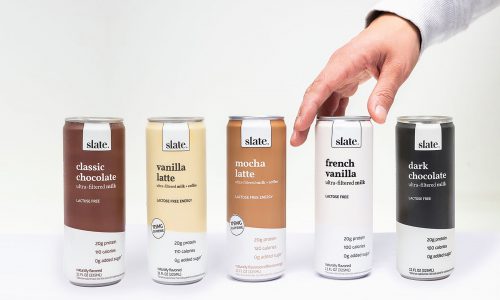The cannabis industry is constantly evolving. After experiencing record-breaking growth over the last few years, even during the height of the pandemic, cannabis sales and marijuana industry projections show no signs of slowing down, especially as more states move to legalize it.
As newer markets emerge and drive growth, if you look at this year’s cannabis industry market share, it’s clear that the industry is only growing and business is strong. More specifically, it’s important to look at the cannabis market size in the U.S. and cannabis market size by state. Headset, a leading cannabis data provider, predicted that the total annual cannabis market in the United States has the potential to reach more than $45 billion by 2025. Despite the challenges the state is currently facing, California is expected to remain the top market in the U.S, reaching an estimate of more than $7 billion in the span of just three years.
Not all products are created equal, of course. When you look at and compare hemp and CBD to THC products, it’s important to focus on the categories like flower, edibles, vapes, and tinctures, for example. It’s very likely that flower will continue to dominate and flourish in the THC space, while edibles and tinctures will be the winning category in the hemp and CBD space. CBD is quickly growing, too. It is one of the fastest-growing product categories, according to New Frontier Data, and its sales are estimated to exceed a whopping $1 billion in 2022. The beauty, wellness and pet product subsections will continue to push consumer demand for CBD.
It’s important to consider that CBD acts as a mitigating factor for the psychoactivity of THC. This means that if THC is the gas, CBD is the brake to slow down the velocity of the psychoactive experience. As the cannabis industry continues to grow and cannabis becomes increasingly more mainstream, consumers who want to enjoy cannabis with a more mild experience will embrace cannabis products that have a significantly higher CBD percentage in them in order to better control and regulate their ideal cannabis experience.
The U.S. will continue to have a substantial impact on the cannabis market throughout the rest of this year and into next year, but it won’t be a banner year without federal legalization. The cannabis industry currently employs more than 300,000 full-time jobs, which is only scratching the surface for an industry that’s not even fully legalized yet. National legalization in the U.S. could result in $128.8 billion in tax revenue and the creation of an estimated 1.6 million new jobs, according to New Frontier Data.
In the meantime, even without federal legalization, and in a time of economic downturn that the country has not seen since the Great Depression, cannabis sales continue to show strength in states where it is legalized. When it comes to the states that will be most responsible for driving sales in the United States, it’s important to look at the information we already have. The same states that have helped drive cannabis sales for the past few years will continue to be leaders this year and into next year, but newer players are beginning to emerge. California’s market size is projected to reach more than $7 billion by the end of this year, according to Statista. That’s a wide lead ahead of Washington and Colorado with under $3 billion respectively. Michigan and Illinois are also expected to come in and round out the top five largest cannabis markets in the United States.
If we zoom out and look ahead even further to 2025, states that have newly legalized cannabis will begin to gain momentum in sales. Florida is expected to bring in more than $3 billion in sales in 2025, which would put it right behind California in numbers. Adult-use licenses will also bring new business to states in the United States. In New York, for example, adult-use licenses are anticipated to be issued in 2023, which would bring in a flood of new opportunities for the cannabis space in the state. New York’s large population of 15 million people over the age of 21 will make the state a leader in the cannabis space in years to come. New Jersey, New York’s neighboring state, has already begun issuing adult-use licenses this year, which will give the state a boost, making it a leader with seven million people over the age of 21 in the state.
While the state of California is unsurprisingly the United States’ cannabis industry leader by a wide margin, taxes and oversupply are contributing to scenarios where growers are letting harvested cannabis go bad versus selling it at market for a loss. There’s currently a “green tea party” that is underway as cannabis growers in California refuse to pay taxes and are protesting the draconian and overbearing tax requirements that make the current model untenable.
This has made its way all the way up to Governor Gavin Newsome as growers are pleading for mercy — something that should not be ignored given that the size of the illegal market currently eclipses the legal market.
The size of the state of California’s black market for cannabis came out to $8.7 billion in 2019, which is far larger and more robust than the legitimate market, according to a Statista study from researcher Jan Conway. This creates a perfect storm for a very rocky road for California’s cannabis industry, and it is likely to result in a lot of smaller or mid-sized players completely going out of business, coupled with larger players engaging in M&A efforts accordingly.
If we take a look at the state of New York, while recreational and adult-use cannabis is legal there, interested buyers won’t actually have anywhere to purchase recreational cannabis until 2023 rolls around. In its neighboring state, New Jersey, 70 percent of municipalities are engaging in the same problems New York is experiencing, which also bolsters traditional market efforts and lost tax revenue for those municipalities. Increasingly, municipalities are opting out, which ultimately means that they won’t get any of the tax benefits. With that being said, they’re also silently supporting traditional market cannabis, crossing their fingers that it will flourish as well.






